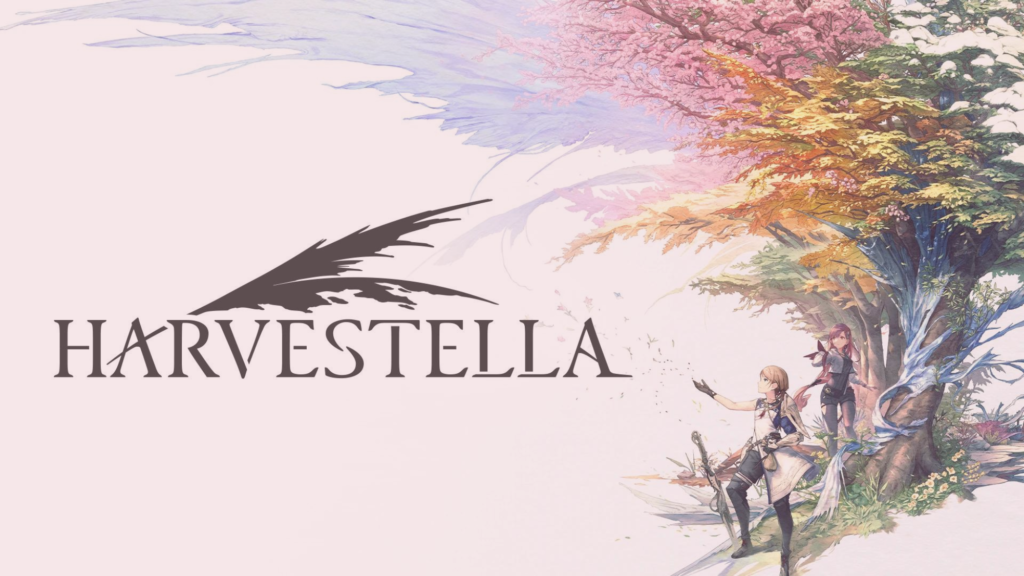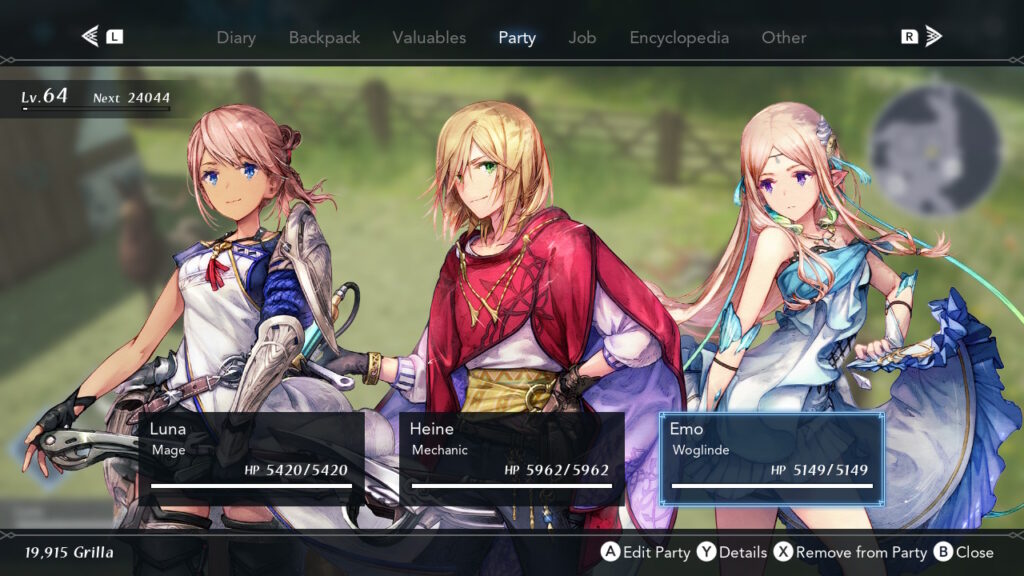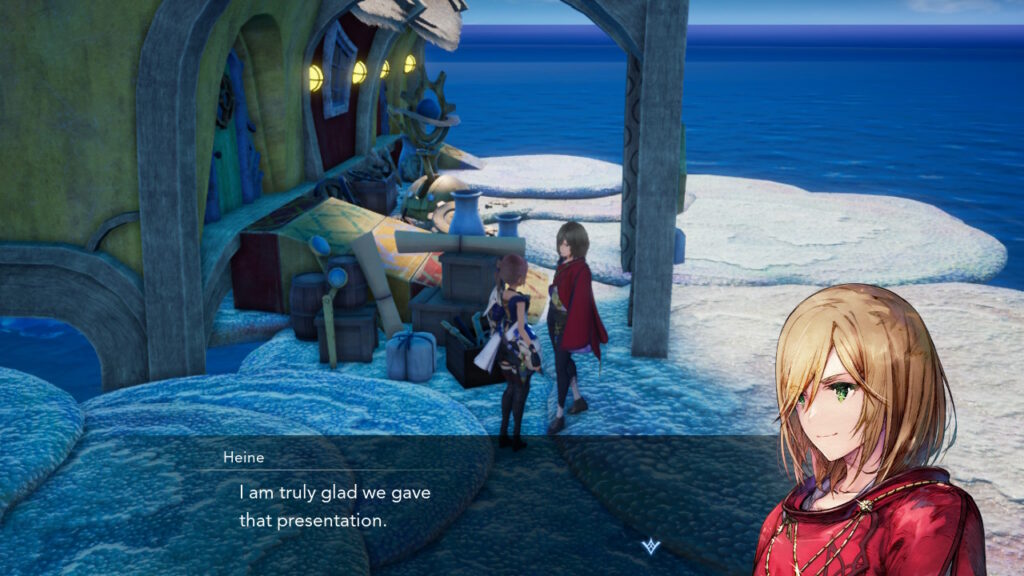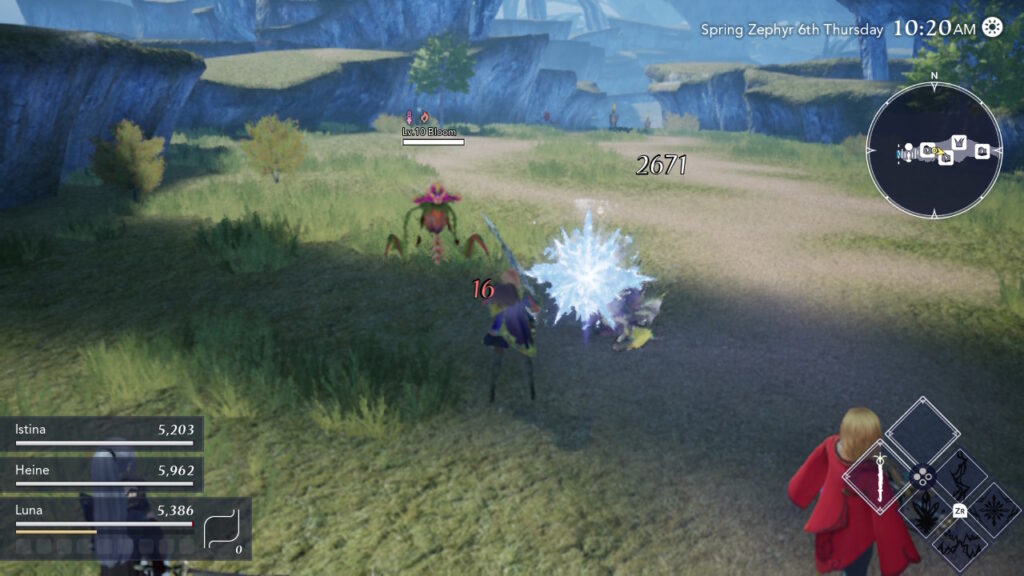Harvestella is an adventure-slash-farming sim developed by SquareEnix for PC and Switch (released November 22, 2022). It’s a unique genre for the company, as “cozy games” don’t tend to be in their purview. As someone always looking for AAA-quality farming sims, this was a game that had been on my radar for ages.
You can buy it on Steam and Nintendo Switch.
This review will contain minor spoilers. No major plot twists will be addressed.
Is Harvestella a Cozy Game?

First of all: no, not really. But it has plenty of cozy elements. I wanted to write this review to speak to gamers, like me, who are obsessed with farming and life sims and are wondering, “Is Harvestella for me?”
Harvestella is mostly action-adventure with some farming and life sim sprinkled in. The majority of the game will be dungeon traversal and critter battling. The good news is, the combat is exceedingly easy, which you can read more about in my Harvestella Tips article. A bit of combat doesn’t detract from cozy games. Just think of Stardew Valley or Ooblets. But Harvestella has a lot of it. It’s required to move the game story forward and it will monopolize most of your time.
What it has going for it is beautiful hand-drawn character profiles, quaint little towns themed by season, deeply moving character stories and side quests, and optional farm achievements that can keep you busy for hours.
On the coziness scale, I’d give it a 2/5. But people who are more adventurous with the genre and like things like Rune Factory, Pokemon, and Moonlighter may find what they are looking for in Harvestella.
After all, the cozy game genre can be stretched a little bit…can’t it?
Harvestella Review
I think it’s important that I write this for the site because a lot of cozy gamers may be intrigued by Harvestella, but you’ll need all the details before you decide whether or not it’s for you.

Characters
I wanted to start by writing about the characters, as I think it’s a unique strength of this game. Not just the main characters, either, but the ones you meet throughout your side quests, too.
As soon as the world opens up, you will have the option to pursue one of three eclectic characters to their township of origin. You can go any direction you want, leading to a similar party-collection mechanism of Octopath Traveler. Unlike Octopath, however, you will be required to recruit all 6 additional characters before the story can move forward. This makes for a tug-at-your-heartstrings moment when all your friends come together at last and the party is made whole. This also allows for all characters to be present in larger cutscenes later on, as the game guarantees they will be with you at that point.
Like any game with a wide cast of characters, you will have your favorites and your mehs. You will be given an opportunity to spend time with each character and advance their personal story, which will also make them stronger in battle. I am a big fan of this mechanic, as it feels very Persona-adjacent. The story connects back to the combat and so on and so forth. Everything is intertwined.
Some characters have a more compelling backstory than others, and it often surprised me who I ended up falling for by the time all was said and done. But they all have moments worth waiting for, with some meditations on the meaning of life and love and purpose and memory woven in.
Something that really surprised me was the oceanic depth to some of the side quest stories! My favorite: a young girl from a cherry blossom city is separated at birth from a family whom she fears may have forgotten about her. The gentle twists and turns genuinely hooked me. I had tears in my eyes at one point. I only wish the side characters had been given full character sketches, instead of the generic “NPC face.” It would have made the stories all-the-more impactful.
Overall, the depth and breadth of characters and their personal stories was a strength of the game.

Story
The overarching story was…very JRPG. Long winding dungeon paths just to be given a breadcrumb of the bigger picture. Often convoluted, if not altogether interesting overall, world-ending plot arcs. A bit of word salad when it comes to describing big concepts or macguffins. It’s a story across vast stretches of time, too, and we all know “time travel” is tricky to nail down.
At its core, it’s a predictable romp: world in danger, attempt to save it comes with dire consequences, a choice must be made.
The strangest thing about the story is that you, the player, are not the protagonist. At the start of the game, you meet a young girl named Aria who has become lost and is trying to find her way home. The game is very much her tale. So much so that I found it hard to get invested at times. “Why am I here when I could be farming?” If Aria had any autonomy, I would have let her save the world without me. I need to tend to my crops, thank you very much.
The game does a good job of plopping the responsibility on your plate at the crux of it all. But by then, I had already mostly checked out. Maybe it’s selfish, but I wanted the story to be my story. I felt like a guest in someone else’s plot.

World
The world is small, charming, and beautiful. It may be eye-rollingly predictable to theme four towns around the four seasons, but it works here. Maybe because the game is also a farming sim, so the essence of spring, summer, fall, and winter have a stronger importance to the gameplay.
I loved the uniqueness of each location, although running between them to get every seasonal seed pack was not so great. In fact, world traversal in general was pretty crummy. Its starts off okay: walking gets you most places, then you have a mount, and then a ship. But as you explore dungeons, and then dungeons behind dungeons, you will quickly find that some locations require three different methods of transportation just to reach them. You’ll walk or fly to the nearest fast travel point; then you will enter an area with a new set of fast travel points; then you will walk again to get to an area not touched by a fast travel point; and so on and so on.
Many locations can’t be accessed from the world map. You have to enter a town or a dungeon and then find the target location’s door within them. It’s a lot of running around for a game who punishes you for being up past 10pm (tired is a status condition).
The main four towns and the surrounding areas are close, quaint, and distinctive. But everything else can become quite muddled, particularly when story or side quests ask you to re-enter a room within a dungeon without a waypoint and completely untouched by fast travel.
You get the gist.

Gameplay
The gameplay loop is quite satisfying once you get into the rhythm of it! You will work on your farm, explore areas for resources, trudge through dungeons, and advance stories and side quests through conversation and cutscenes. I found a fulfilling balance of dungeon progression, taking days off to work the farm and attend to side quests, and then back to dungeons again.
Combat is simple. One button to attack, separate buttons for special skills, a button for food, items, and potions. That’s it. Combat is easy, too, as I mentioned above. If you enjoy a more challenging combat experience, you can use party members who aren’t as leveled up or try a job you haven’t fully unlocked. If not, you should pretty much be able to walk through each dungeon unbothered. Just have a few sandwiches or smoothies on hand for HP boosts.
Farming is what you would expect of it. You can plant trees and crops across three different terrains; tend to your animals and receive produce and other sellables from them; build maker machines for cheese, juice, animal feed, and so on; and upgrade your farm space and facilities. The farm mostly supports the mainline quest by making you money and providing ingredients for stat-boosting recipes. You could most likely get away with doing very little on your farm and still progressing all the way through the game.
One thing that disappointed me was that farm items rarely, if ever, were asked for in a side quest. Most side quests are just talking to people in various locations and then reporting back to the quester. It would have been nice to see side quests ask for you to “slay X many monsters” or “deliver X many crops.” Instead, farming is made mostly obsolete and side quests are less “quest” and more “conversation.”
The skeleton of a good game is in there, I just wish they had fleshed it out some more.

Music
I’m obsessed with video game music and have been known to listen to OSTs long after I’m done with the game itself. When people ask me what my favorite music genre is, I say “soundtracks.” I’m in that deep.
The music in this game is incredible, both in its quality and variety. Day to day life will be punctuated with small, frolicking melodies. And boss battles or powerful story moments have full on orchestral accompaniment with choir vocals.
Just listen to the Harvestella Main Theme versus Those Who Continue to Resist Destiny. It goes from a quaint jaunt on your farm to fighting for your life in the kind of clash that poets write of in legend. It’s the kind of symphony you hear in the soul of your bones.
Harvestella is definitely not the kind of game where you will want to turn down the volume and listen to your favorite true crime podcast while you grind. You will want to be all-in, audio and all. And that is high praise, because I have a lot of Crime Junkie to get through.
Final Verdict
I really enjoyed my time with Harvestella. I would have a hard time recommending it to just anyone though. Final verdict: I’d say buy it, if you’re curious; but wait for a sale!
Who Harvestella is for:
- Fans of Rune Factory
- Fans of SquareEnix
- JRPG X cozy game enjoyers
- Character-driven story fanatics
Who Harvestella is not for:
- Those looking for the classic “cozy” game
- Those looking for heavy emphasis on farming sim elements
Stay cozy, gamers!
You Might Also Like: Tips You Need to Know Before Starting Harvestella
